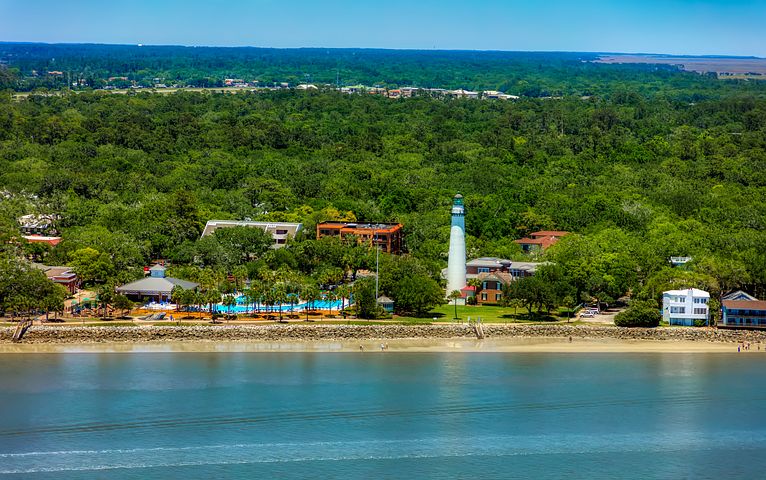Georgia
Georgia: A Journey Through The Peach State
Located in the Southeastern region of the United States, the vibrant state of Georgia is the 24th-largest state by area and the eighth most populous among the 50 states. With a diverse geography, rich history, and thriving economy, Georgia has much to offer.
Geographic Positioning
Situated along the southeastern coastline of the United States, Georgia is surrounded by numerous states and water bodies. It shares its borders with Tennessee and North Carolina to the north, South Carolina to the northeast, the Atlantic Ocean to the southeast, Florida to the south, and Alabama to the west.
The state’s coastal position serves as a strategic advantage, providing access to vast water bodies and enhancing its economic and ecological diversity.
Demographics and Urban Development
As of 2020, Georgia’s population was recorded at 10,711,908, making it the eighth most populous state in the U.S. The capital city, Atlanta, is a bustling hub that houses more than 57% of Georgia’s total population.
Atlanta, designated as a beta(+) global city, not only serves as the state’s capital but also its largest city. Its metropolitan area, home to over six million people in 2021, ranks as the eighth most populous metropolitan area in the United States.

Historical Overview
Georgia’s rich history dates back to 1732 when it was founded as the Province of Georgia and settled in 1733. The state derived its name from King George II of Great Britain, and it was the last and southernmost of the original Thirteen Colonies to be established.
Initially a British royal colony, Georgia, over the years, witnessed significant historical events and transformations. It was the fourth state to ratify the United States Constitution in 1788 and played a pivotal role during the Civil War.
The state’s economy experienced a significant shift in the late 19th century, transitioning from an agrarian economy to industrialization under the New South philosophy. It has since continued to evolve and diversify.
Civil Rights Movement and Georgia
Georgia holds a significant place in the history of the civil rights movement in the United States. Several notable figures from Georgia, including the Atlanta-born Baptist minister Martin Luther King Jr., led the civil rights movement in the mid-20th century.
Atlanta also hosted the 1996 Summer Olympics, an event that marked the 100th anniversary of the modern Olympic Games and elevated Georgia’s international profile.
Population and Economic Growth
Since 1945, Georgia has experienced substantial population and economic growth. The state’s strategic location in the Sun Belt region of the United States contributed to this growth. Between 2007 and 2008, 14 of Georgia’s counties were listed among the nation’s 100 fastest-growing.

Geographic Diversity
Georgia is characterized by a diverse range of landscapes, flora, and fauna. The state’s northernmost part features the Blue Ridge Mountains, a part of the larger Appalachian Mountain system.
The terrain then transitions into the Piedmont plateau, extending from the foothills of the Blue Ridge to the Atlantic Seaboard Fall Line, marking the beginning of the Coastal Plain, the state’s southern region. Despite its varying landscapes, Georgia’s climate remains largely humid subtropical.

Historical Settlements and Revolutions
Before European settlement, Georgia was home to the mound-building cultures. The British colony of Georgia was established by James Oglethorpe on February 12, 1733. The colony was administered under a charter issued by King George II and was later taken over by the crown when the government failed to renew subsidies supporting the colony.
Georgia was one of the Thirteen Colonies that revolted against British rule in the American Revolution. The state’s first constitution came into effect in February 1777, and Georgia became the tenth state to ratify the Articles of Confederation in 1778 and the fourth state to ratify the United States Constitution in 1788.
Ecological Diversity
Georgia is home to approximately 250 species of trees and 58 protected plant species. The state’s native trees include red cedar, various pines, oaks, hollies, cypress, sweetgum, scaly-bark, white hickories, and the sabal palmetto.
The state’s fauna is equally diverse, with the white-tailed deer found in almost all counties. The state hosts about 160 bird species, including the northern mockingbird and brown thrasher. The reptile species in Georgia include the eastern diamondback, copperhead, and cottonmouth snakes, as well as alligators.
Georgia’s freshwater game fish include trout, bream, bass, and catfish, while popular saltwater game fish include red drum, spotted seatrout, flounder, and tarpon.

Modern Georgia
Today, Georgia is recognized for its significant cultural, economic, and historical contributions. The state has embraced progress while preserving its historical heritage, creating a unique blend of the old and the new. From its bustling cities to its scenic landscapes, Georgia remains a fascinating destination for residents and visitors alike.
